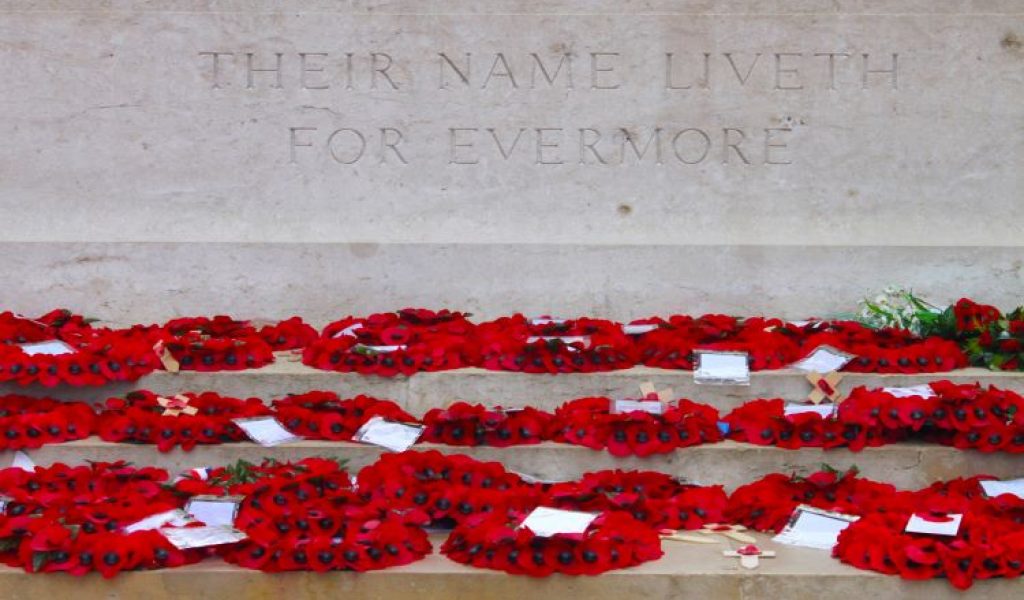
November 11, 2022, was my first Armistice Day in France. As a history student who has studied both the First and Second World Wars, I had been intrigued to find out how this day would be commemorated in France, whether there would be the same memorial services and Sunday cenotaph broadcasts, or a completely different way of doing things. France emerged from the 1918 armistice with between 1.4 and 1.5 million of the 7.8 million mobilised servicemen dead, millions more wounded, thousands more lost, and a shattered landscape from which bombs and bodies are still recovered to this day. France can never forget; it is still recovering.
My local commemoration was much like those seen around the UK on Remembrance Sunday. Here in France, Armistice Day is a bank holiday, so the local community gathered together in one of the town squares to commemorate the loss of their servicemen in the First World War and those of their allies too. Just like it is across the world, Armistice Day is used as an opportunity to honour the dead from both world wars in France, which was demonstrated by the city choosing to hold this ceremony in front of a Second World War memorial. It reads “To all those who stood up against Nazi Oppression September 3 1939 – May 8 1945.” The inclusivity of this memorial serves as a reminder that this was a global conflict and that France recognises the role played by its allies in its liberation.

As I listened to the mayor, local dignitaries, and school children speak from the lectern, I saw a stall covered in blue flowers made from everything from bottle tops and pipe cleaners to blue lace and buttons. The local college students and their teacher were selling “Bluets de France” to raise money for “L’association du bluet de France.” The bluet serves as an emblem for France just as the poppy does for us, chosen because it was one of the only flowers to grow on the battlefields but also because it reminds people of the blue uniform of the first French WWI infantrymen. It is a symbol of the past that actively helps present and future veterans through fundraising and charitable efforts.
The Last Post started in the 1790s as just one of the many British Army bugle calls sounded daily in camps and subsequently eventually became synonymous with First World War commemoration throughout the world. The piece was played, as is traditional, by a lone bugler as the standards were lowered and red, white and blue flowers were placed. It was a slower, more melodic and mournful version than those I had heard at home in Wales and at remembrance services in Belgium. The last piece of music began not long after as everyone joined in in a rousing rendition of the Marseillaise. The power and feeling of this national anthem is well-known however, in this moment, its opening lyrics: “To arms, citizens! Form your battalions!”, were imbued with the emotions of the day. It created a poignant and powerful atmosphere as the entire community sang together. I did miss hearing the collective “We will remember them” at the end of the service. Instead, the ceremony ended with a procession of men dressed in First and Second World War French uniforms, followed by standard-bearers and a beautiful brass-band tune as the crowd applauded.
France commemorates the deaths of its citizens by surrounding their memorial with life
“Vive la république. Vive la France” or “Long live the republic. Long live France” was how almost all the dignitaries finished their heartfelt tributes. It served as a reminder of the ideals these men and women fought to defend both from 1914-1918 and 1939-1945. The speeches continued until a little while after 11 o’clock. I then realised that, in and amongst the joyful, upbeat yet militaristic music, there was no two minutes silence. It seems that France commemorates the deaths of its citizens by surrounding their memorial with life – a wonderful and fitting tribute, and the reason why many cenotaphs in the UK and beyond can be found in town and city centres.
This year was particularly poignant because there is war in Europe once again, because the words allies and enemies are heard all around in the media and international politics. Everything our ancestors, our friends and neighbours’ ancestors, peoples’ brothers, sisters, daughters, nephews fought for is hanging in the balance. Lieutenant Colonel John McRae’s famous poem says it best:
“…To you from failing hands we throw
The torch; be yours to hold it high,
If ye break faith with us who die
We shall not sleep, though poppies grow
In Flanders’ Fields.”
So, even if we commemorate these lives differently, the most important thing is that they are commemorated. By remembering the sacrifices made during the First and Second World Wars and all other conflicts that followed, we can protect the legacy they handed to us by working together to create a better world for all.


